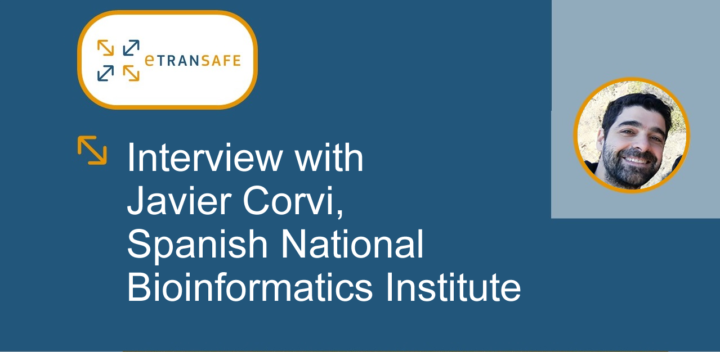
Bioinformatics researcher at the Spanish National Bioinformatics Institute (INB) Coordination Node, Life Sciences Department, Barcelona Supercomputing Center (BSC). Currently doing a PhD in Biomedicine at the University of Barcelona focused on the development of modular, generic and containerized Biomedical Natural Language Processing (NLP) systems.
What is your current role in eTRANSAFE?
I have been part of the eTRANSAFE text mining task force for more than three years doing different tasks related to Natural Language Processing (NLP). We focus mainly on the detection and extraction of treatment-related findings from preclinical toxicological reports. The final objective is to develop a system able to provide facilities to the toxicological experts in order to visualize and validate the findings detected from the reports.
What do you find most challenging about the project?
Text mining has been widely used in the clinical phase of the drug development process, for example in pharmacovigilance activities. In this case, I found it challenging to create and develop NLP resources and tools for the preclinical phase, because this is the first time that this topic has been addressed. This is particular to the text mining task force efforts. In a more general view of the project, integrating all the databases and software into a single eTRANSAFE system is an important achievement; but I think the most challenging goal is to build the “translational bridge” between the preclinical and clinical domain.
What represents for your organization the involvement in the project?
eTRANSAFE offers the framework to establish new collaborations and promote existing ones with different institutions across the Consortium. BSC, a linked third party of ELIXIR, has strengthened and developed new technologies and systems to enhance the overall drug development process.
Which aspects of the project inspire you the most?
I believe that we can continue improving the drug development process with the use of more advanced in-silico tools, for example text mining systems, and try to minimize the use of animals during compound tests. This is the most inspirational aspect for me.
